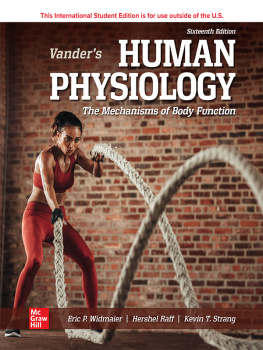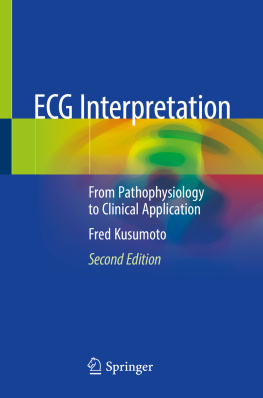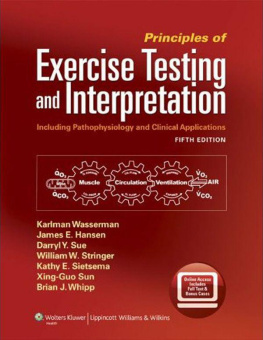Notice
Medicine is an ever-changing science. As new research and clinical experience broaden our knowledge, changes in treatment and drug therapy are required. The authors and the publisher of this work have checked with sources believed to be reliable in their efforts to provide information that is complete and generally in accord with the standards accepted at the time of publication. However, in view of the possibility of human error or changes in medical sciences, neither the authors nor the publisher nor any other party who has been involved in the preparation or publication of this work warrants that the information contained herein is in every respect accurate or complete, and they disclaim all responsibility for any errors or omissions or for the results obtained from use of the information contained in this work. Readers are encouraged to confirm the information contained herein with other sources. For example and in particular, readers are advised to check the product information sheet included in the package of each drug they plan to administer to be certain that the information contained in this work is accurate and that changes have not been made in the recommended dose or in the contraindications for administration. This recommendation is of particular importance in connection with new or infrequently used drugs.
Copyright 2013 by McGraw-Hill Education. All rights reserved. Except as permitted under the United States Copyright Act of 1976, no part of this publication may be reproduced or distributed in any form or by any means, or stored in a database or retrieval system, without the prior written permission of the publisher.
ISBN: 978-0-07-182831-4
MHID: 0-07-182831-1
The material in this eBook also appears in the print version of this title: ISBN: 978-0-07-176740-8, MHID: 0-07-176740-1.
E-book conversion by Codemantra
Version: 1.0
All trademarks are trademarks of their respective owners. Rather than put a trademark symbol after every occurrence of a trademarked name, we use names in an editorial fashion only, and to the benefit of the trademark owner, with no intention of infringement of the trademark. Where such designations appear in this book, they have been printed with initial caps.
McGraw-Hill Education books are available at special quantity discounts to use as premiums and sales promotions or for use in corporate training programs. To contact a representative, please visit the Contact Us page at www.mhprofessional.com.
TERMS OF USE
This is a copyrighted work and McGraw-Hill Education and its licensors reserve all rights in and to the work. Use of this work is subject to these terms. Except as permitted under the Copyright Act of 1976 and the right to store and retrieve one copy of the work, you may not decompile, disassemble, reverse engineer, reproduce, modify, create derivative works based upon, transmit, distribute, disseminate, sell, publish or sublicense the work or any part of it without McGraw-Hill Educations prior consent. You may use the work for your own noncommercial and personal use; any other use of the work is strictly prohibited. Your right to use the work may be terminated if you fail to comply with these terms.
THE WORK IS PROVIDED AS IS. McGRAW-HILL EDUCATION AND ITS LICENSORS MAKE NO GUARANTEES OR WARRANTIES AS TO THE ACCURACY, ADEQUACY OR COMPLETENESS OF OR RESULTS TO BE OBTAINED FROM USING THE WORK, INCLUDING ANY INFORMATION THAT CAN BE ACCESSED THROUGH THE WORK VIA HYPERLINK OR OTHERWISE, AND EXPRESSLY DISCLAIM ANY WARRANTY, EXPRESS OR IMPLIED, INCLUDING BUT NOT LIMITED TO IMPLIED WARRANTIES OF MERCHANTABILITY OR FITNESS FOR A PARTICULAR PURPOSE. McGraw-Hill Education and its licensors do not warrant or guarantee that the functions contained in the work will meet your requirements or that its operation will be uninterrupted or error free. Neither McGraw-Hill Education nor its licensors shall be liable to you or anyone else for any inaccuracy, error or omission, regardless of cause, in the work or for any damages resulting therefrom. McGraw-Hill Education has no responsibility for the content of any information accessed through the work. Under no circumstances shall McGraw-Hill Education and/or its licensors be liable for any indirect, incidental, special, punitive, consequential or similar damages that result from the use of or inability to use the work, even if any of them has been advised of the possibility of such damages. This limitation of liability shall apply to any claim or cause whatsoever whether such claim or cause arises in contract, tort or otherwise.
Contents
About This Product
This set of review cards is designed for use by medical students at various levels of training, inclusive of preclinical students preparing for USMLE Step 1 examination to senior students currently in clinical training and preparing for internship and reviewing for USMLE Step 2 examination.
As such, the cards can be used in multiple ways. Junior students can use them to self-test and prepare for examination as well as to provide exposure to some of the most common clinical presentations with pertinent diagnostic findings. Students in advanced training will find the cards useful to relate therapeutic management decisions to underlying pathophysiology. On each card, key clinical information is presented to help the student recognize high yield concepts and presentation of a particular disease entity. Explanations on the back of the card provide concise and highly relevant (for clinical care or exam review) details of physiologic mechanisms.
It is our goal that use of this product will help students to simultaneously learn/recognize important (highly testable!) clinical conditions, while reviewing the important underlying pathophysiologic principles associated with each.
Bios
Sarina Amin is a fourth year medical student at the University of Central Florida, College of Medicine. She will be pursuing a residency in ophthalmology at the University of Florida in Gainesville. She has a strong interest in academic medicine and global health.
Keith Connolly is a fourth year medical student at the University of Central Florida, College of Medicine, and a military veteran. He will be continuing his training at the University of Pennsylvania with a residency in orthopedic surgery. His additional interests include medical education and training as well as inpatient infection prevention.
Maria L. Cannarozzi is an associate professor of internal medicine and pediatrics at the University of Central Florida, College of Medicine. Dr. Cannarozzi is the Clerkship Director of the Core Clerkship in Internal and Family Medicine and also provides clinical care in the ambulatory setting.
Jonathan Kibble is an associate professor of physiology and is the assistant dean of medical education at the University of Central Florida. Dr. Kibble has taught physiology and pathophysiology to medical students for over 15 years and is coauthor of the textbook Medical Physiology: The Big Picture; his academic research is on assessment in medical education.
Abbreviations
5-HIAA | 5-hydroxyindoleacetic acid |
ABI | ankle-brachial index |
ACD | anemia of chronic disease |
ACE | angiotensin-converting enzyme |
ACS | acute coronary syndrome |
AD | Alzheimers disease |









